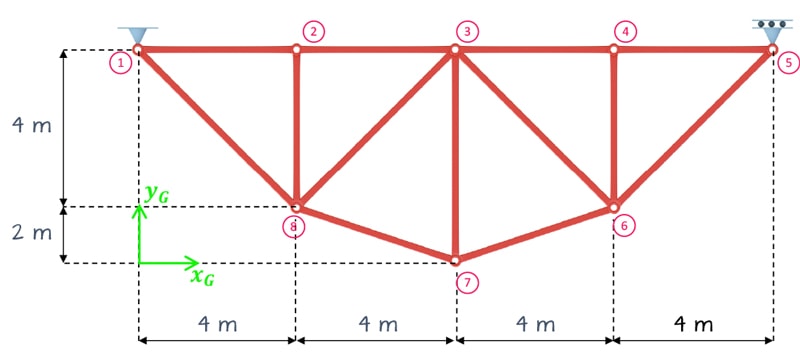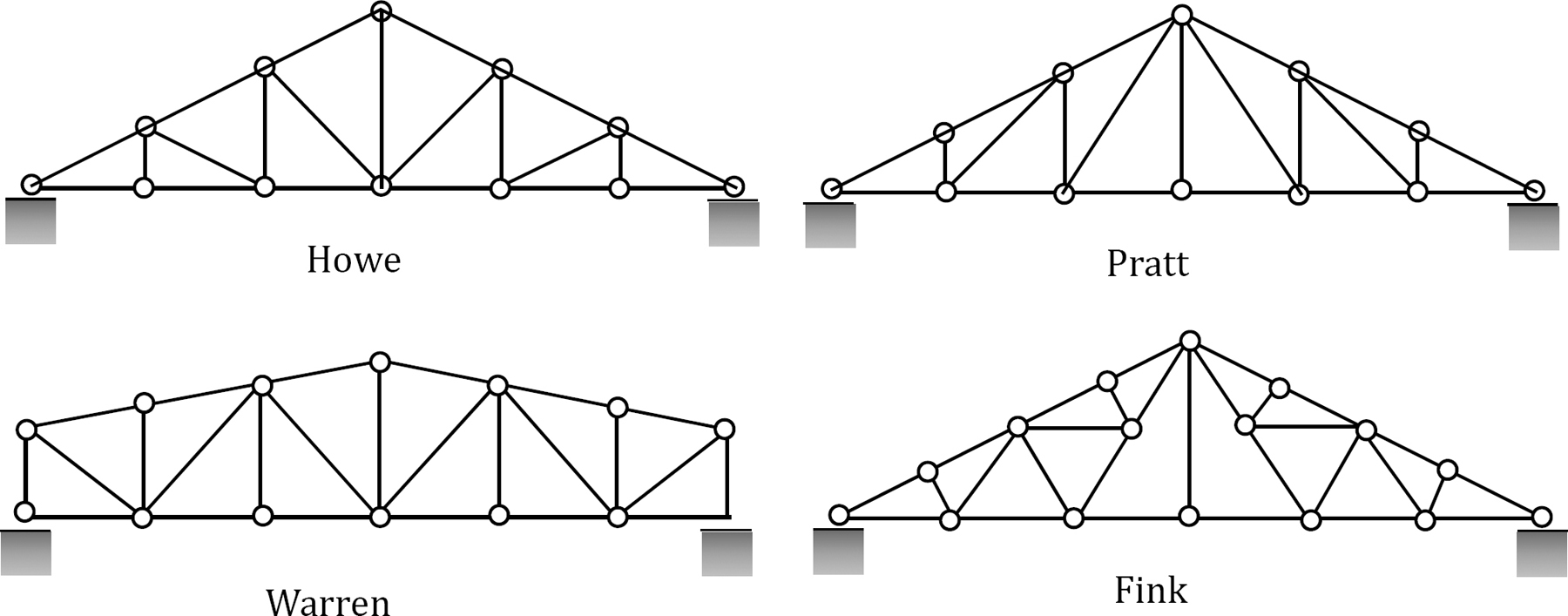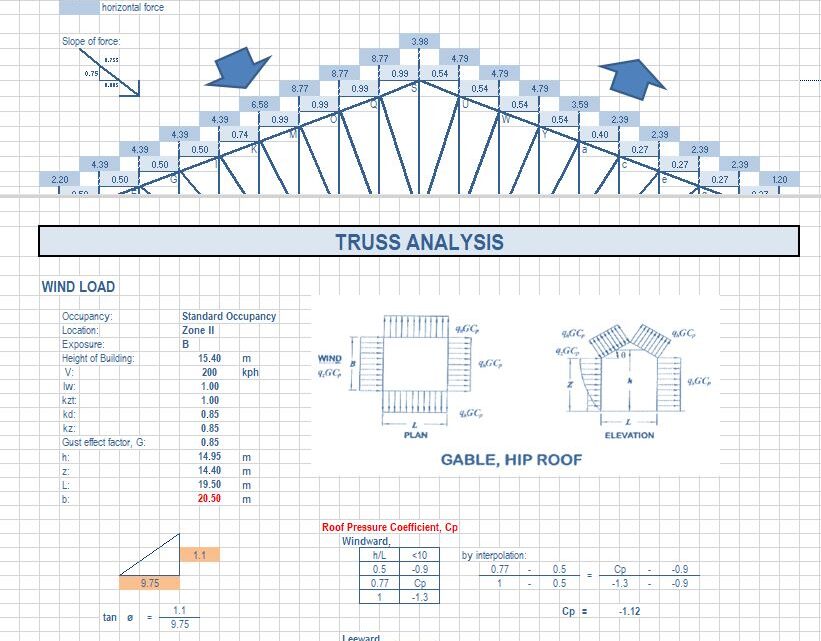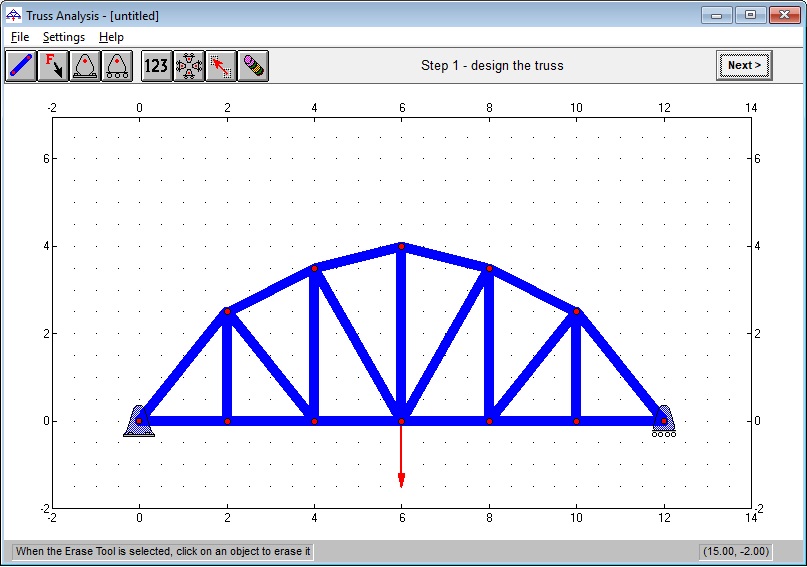Truss Analysis Calculator
Modern engineering layout is not complete without truss structures. The stability and safety of these structures play a vital role in ensuring that they are durable enough. However, it can be a challenging task to calculate the internal forces and joint displacement in a truss system. Nonetheless, truss analysis calculators are ideal assistive devices for that.
Thanks to these potent tools that evaluate the stability and security of truss structures making use of various ways, it has never been simpler for engineers and architects to create safe and effective structures. Therefore, this article discusses the core structures underlying truss analysis calculators, their significance in engineering and how they can help make truss constructions a more safe and seamless process.
Truss Analysis Calculator
A truss analysis calculator is one of the most important tools used in engineering. It has gained its recognition from allowing engineers to determine the internal forces and deformations in truss structures. As trusses are mainly used in making structures like bridges, roofs, towers, and cranes among numerous applications, it is a structure composed of triangular units connected at joints. Due to such a burden, truss analysis is crucial in overseeing that the structure is not only safe, stable, to be used, but can withstand loads of all types.
Read More: Fence Material Calculator

Types of Truss Analysis Calculator
Truss analysis calculators can be classified into two types:
- Internal forces calculator
- Joint displacement calculator
Internal Forces Calculator
The internal forces truss analysis calculator is a tool used in engineering to determine the internal forces that exist in the truss structure. The internal forces in a truss structure include tension, compression, and shear.

Joint Displacement Calculator
The joint displacement truss analysis calculator is used to determine the amount of displacement at each joint in a truss structure. Displacement refers to the movement of a joint from its original position when a load is applied.
By analyzing the displacement and stress diagrams, engineers can determine if the truss structure can safely withstand the applied loads and if any modifications or reinforcements are necessary to ensure its stability.
Learn More: Floor Area Calculator
How Does the Truss Analysis Calculator Work?
Input Data
The truss analysis calculator requires specific input data to determine the internal forces and deformations in the truss structure. The input data required for the calculator includes:
- The geometry of the truss
- The type of load applied
- Material properties of the truss members
Calculation Process
The calculation process involves applying the relevant formulas to the input data. The calculator can determine the internal forces in each truss member, the reactions at the supports, and the displacements of the joints.

The truss analysis calculator uses three primary formulas:
- Method of joints
- Method of sections
- Castigliano’s theorem
We will explain the formulas and their importance in a while.
Output Results
As a result of the calculator’s processing, the output results of the truss analysis include force and moment diagrams separately, alongside deflection diagrams. Once that is done, the data interpretation involves analyzing the output results to give a picture into how stable and safe the respective truss structure is.
Formulas used in Truss Analysis Calculator
The truss analysis calculator uses three primary formulas to determine the internal forces and deformations in the truss structure:
The Method of Joints
This formula uses the equilibrium of forces to determine the internal forces in each member of the truss structure at the joints.
The Method of Sections
This formula uses the equilibrium of forces and moments to determine the internal forces in each member of the truss structure at a specific section.
Castigliano’s Theorem
This formula uses the principle of virtual work to determine the deformation of a structure due to a specific load.
Also Checkout: Beam Deflection Calculator
Factors Affecting Truss Analysis Calculations
Several factors can affect the truss analysis calculations. One of these factors is wind load. The other factors that may have an effect on the truss analysis calculations are live load and dead load.
The live load is typically defined as the weight of people, equipment, and other materials that may be added to the structure. On the other hand, dead load can be described as the weight of the structure itself.

Limitations of Truss Analysis Calculator
Truss analysis calculators have some limitations such as:
- The calculators may assume that the truss structure is static, which may not be the case in real-life scenarios.
- The calculations may be simplified, and some factors may not be considered.
FAQs
What is the difference between internal forces and joint displacement in truss analysis?
Internal forces refer to the tension, compression, and shear that exist in the truss members, while joint displacement refers to the movement of a joint from its original position when a load is applied.
What is the significance of displacement diagrams in truss analysis?
Displacement diagrams can be analyzed to determine the stability and safety of a truss structure by identifying potential failures caused by excessive deformation.
What is the significance of stress diagrams in truss analysis?
Stress diagrams can be analyzed to determine the stability and safety of a truss structure by identifying potential failures caused by excessive stress in the truss members.
What output results do a truss analysis calculator provide?
The output results include force diagrams, moment diagrams, displacement diagrams, and stress diagrams.
Conclusion
Truss analysis calculators are essential tools in engineering because they have the ability to make the process of truss analysis easier and more accurate. However, it is worth noticing that truss analysis calculators make certain assumptions and may not account for all factors. Because of this, they may not always give the right results on the truss structure’s stability. Hence, it is necessary to consult with a professional engineer or architect to come to a more informed conclusion regarding analysis and having a proper design.

